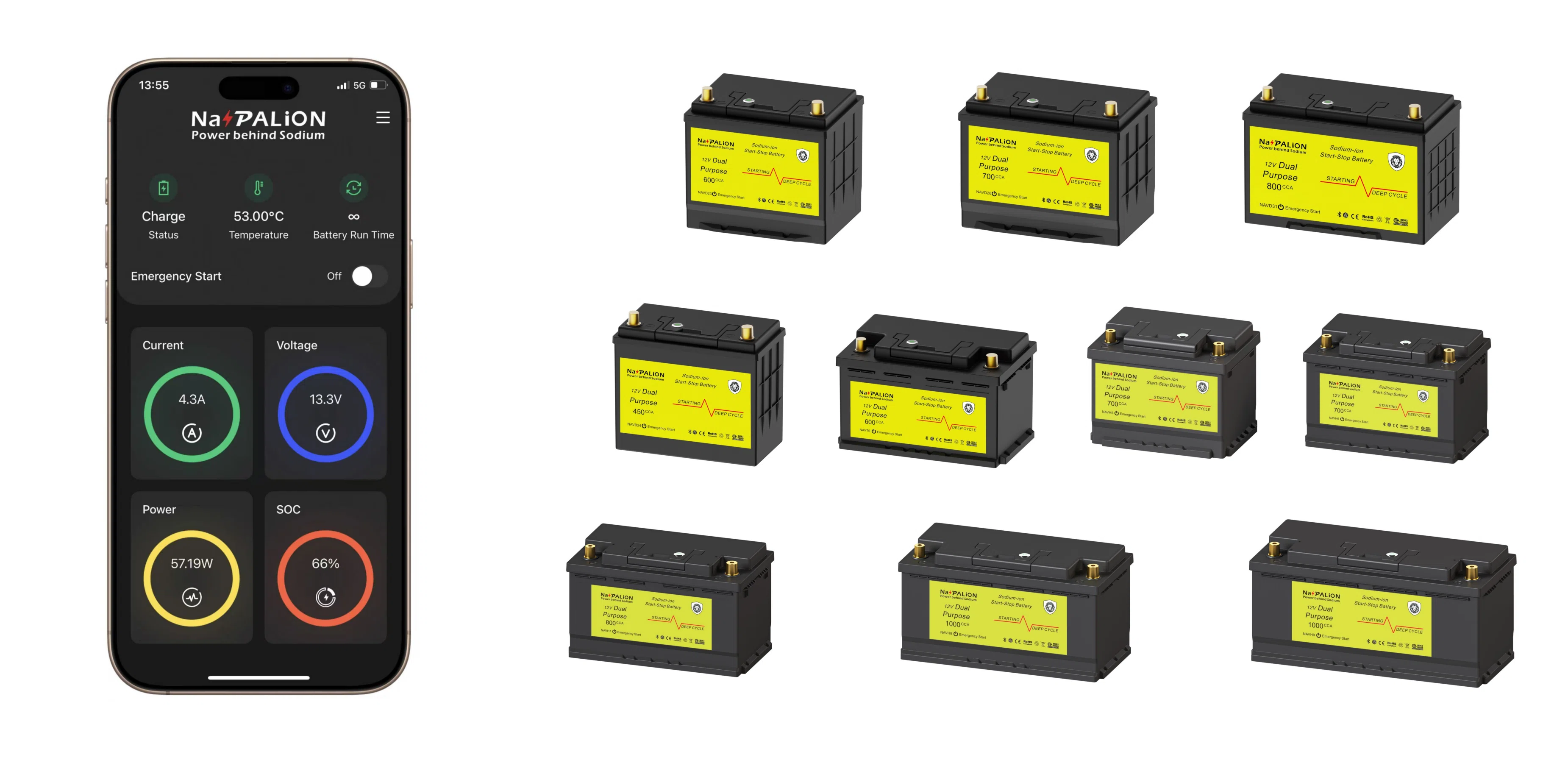How do sodium-ion start-stop batteries help vehicles reduce carbon emissions?
The design purpose of vehicle start-stop systems is to reduce carbon emissions, enabling vehicles to meet increasingly stringent emission standards. However, embarrassingly, most users prefer to turn off the start-stop system while driving. Users tend to disable the start-stop function based on the following two perceptions.
First, users are concerned that frequent engine starts during driving will cause wear and tear on the engine.
Secondly, vehicles equipped with start-stop systems use AGM or EFB starter batteries. These two types of batteries are significantly more expensive than ordinary lead-acid starter batteries, especially AGM batteries. Since AGM or EFB batteries only have a lifespan of around 500 cycles, the fuel savings over their lifespan are insufficient to cover the purchase cost of an AGM or EFB battery.
Engine wear primarily occurs during the cold start phase. When the engine is started for the first time after it has fully cooled down, the engine oil has already flowed back to the oil pan, leaving insufficient lubrication between the various friction surfaces inside the engine (such as the cylinder walls and piston rings, and the crankshaft and bearings). At the moment of starting, the parts are in a state of dry friction or boundary friction until the oil pump pumps the oil back to all parts. Although this process is brief, the wear is extremely severe.
The vehicle's start-stop system only activates after the engine reaches its normal operating temperature. It's easy to see that the engine is in a warm-start phase when the start-stop system is working. At this time, the engine oil is already fully lubricated, and a significant portion of the oil adheres to the surfaces of internal engine components, forming a stable oil film. This warm-start lubrication condition is far superior to a cold start, resulting in negligible wear.
Even excluding engine wear, the high operating costs caused by the short lifespan of AGM or EFB batteries make consumers' reluctance to use start-stop systems understandable.
An ideal start-stop system solution must effectively reduce vehicle carbon emissions while also lowering the overall operating costs for users. The application of sodium-ion start-stop batteries has laid a solid foundation for the practical application of vehicle start-stop systems.

Sodium-ion start-stop batteries have a life cycle of 2000 times at 100% depth of discharge (DOD). If the DOD is limited to 80%, the life cycle reaches 5000 times. Currently, the purchase cost of sodium-ion start-stop batteries is approximately 1.5 to 2 times that of AGM or EFB batteries. Considering the ultra-long lifespan of sodium-ion start-stop batteries, their overall cost of use over their lifespan is only 30% to 40% of that of AGM or EFB batteries. The true potential of vehicle start-stop systems will only be realized when they simultaneously benefit both environment and users.
How much fuel consumption can a vehicle start-stop system effectively reduce? According to Bosch's internal tests and data, the start-stop system can reduce fuel consumption by 8%-15% in urban driving conditions, a figure widely cited in the automotive industry. Furthermore, according to the assessment of the U.S. Environmental Protection Agency (EPA), the start-stop system can save an average of 3%-5% on fuel consumption when considering mixed urban and highway driving conditions.
According to data released by the International Energy Agency (IEA) in 2023, annual carbon emissions from road vehicles are approximately 6.5 billion tons. To make a simple calculation, let's assume all road vehicles are equipped with start-stop systems. Based on a 3% reduction in carbon emissions, this would mean a reduction of approximately 200 million tons of carbon emissions annually. A mature tree can absorb approximately 22kg of carbon dioxide per year. 200 million tons of carbon emissions is roughly equivalent to the carbon dioxide absorption capacity of 90 billion mature trees. The Amazon rainforest, known as the lungs of the Earth, contains approximately 390 billion trees; this is equivalent to expanding the Amazon rainforest's area by 20%.
The large-scale application of sodium-ion start-stop batteries can help every car owner with a vehicle start-stop system take a solid step towards energy conservation and emission reduction.
About DEFORD New Power Co., Ltd.
DEFORD New Power Co., Ltd. is committed to design and manufacture advanced, safe and reliable lithium-ion, sodium-ion battery systems. We are veterans of battery industry, and our core team has more than 20 years battery expertise.
Thanks to our deep understanding to battery technology, battery management system (BMS), and expertise on mechanics and thermodynamics. With the assistance of our advanced manufacturing facilities and cloud-based manufacturing execution system (MES). We do have the ability to guarantee the high quality, safety and reliability of your battery systems.
For any inquiries about sodium-ion starter batteries, please contact us by info@deford.com.cn.